Derek Yu is amazed by the variation in Roguelike games which has emerged in recent years, and the versatility of the format it revealed. "It's kind of like finding a hundred new ways to use toothpaste," he says. "It's proven itself to be a design framework that's extremely flexible and broad, which is surprising, given that traditional Roguelikes were so strictly defined in a lot of ways."
The Spelunky creator can survey the Roguelike boom from his position as one of its trailblazers. Perhaps more than any other game, his baby popularised the notion that Roguelike elements could be freed from turn-based dungeons and applied to any genre. "It's been awesome to see how far things have come since the release of Spelunky Classic in 2008 – I never would have imagined that ten years later I'd be releasing Spelunky 2 alongside all these other cool Roguelike games!"
Over and over and over
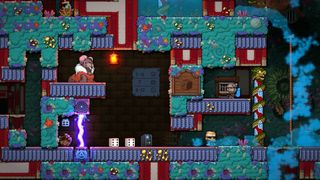

This article first featured in Edge Magazine – check out subscription options at Magazines Direct
It's a decade that has seen the genre staples of permadeath and procedural generation repeatedly excavated and smelted down for general use. Search for 'Roguelike' on Steam and you'll pull up over 1,000 full games, with more than 300 of those released last year. This year we can expect everything from RPGs and deckbuilders to twin-stick shooters, brawlers and any number of action platformers sporting the Roguelike tag. For Yu and others returning to the fray with sequels to their classics, it's a very different and rapidly evolving landscape. It's true what Spelunky says: the walls are shifting.
Teddy Lee, co-founder of Cellar Door Games, was another early pioneer as the designer of 2013's Rogue Legacy. "We made Rogue Legacy originally because we wanted to make a Roguelike that was more accessible," he tells us. "I think it has opened the door to some people to get into more hardcore Roguelikes." It surely has. Once the likes of Spelunky and The Binding Of Isaac broke genre boundaries, Rogue Legacy played a big part in injecting the next magic ingredients: continuity and tangible progression. Today, as Lee guides Rogue Legacy 2 through Early Access, we expect our Roguelikes to feed out lasting rewards as standard.
More than that, accessibility has evolved into hybridisation and infinite translatability. Developers such as Red Hook Studios experimented further, its 2016 title Darkest Dungeon thriving on the stark contrast between modern base building and the old terror of turnbased RNG. "We use the [Roguelike] genre as scaffolding but then look at every possible feature with a fresh scorecard of 'will this enhance this game?'" says Tyler Sigman, co-founder of Red Hook and design director on Darkest Dungeon. "This naturally leads to some risk-taking and innovation." We can expect the forthcoming sequel to find a path of its own. "We simply didn't want to make the same game again," adds Chris Bourassa, Red Hook's other co-founder and Darkest Dungeon's creative and art director. "We're leaning into the Roguelike structure even harder this time, and changing the metagame significantly."
The concept of a 'metagame' – and the three developers' stances on it – exemplifies how much Roguelikes have diversified over time. The word sums up the modern emphasis on high-level systems determining random drops and overall advancement. For Bourassa, this has become an essential element. "What has become clear to me is just how vital a solid and rewarding metagame is," he says. "I bounce off games that don't provide adequate or interesting persistent rewards. The Roguelike characteristics of a game begin to break down for me into a sort of nihilistic chore loop unless the context in which I'm playing is relevant and rewarding."
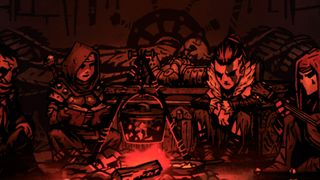
"We use the roguelike genre as scaffolding but then look at every possible feature with a fresh scorecard of 'will this enhance this game?'"
Tyler Sigman, Red Hook Studios
Lee is more circumspect, and wary of over-focusing on metagame rewards. "The meta-genre as a whole seems to be going further and further into becoming time-burner gacha games." Too often, he says, "you're trading away your actual physical time for item rolls," with the beginning of each new run just a case of pulling the lever to see what you'll get next. Still, he concedes that such systems can make for enjoyable 'chill' gaming sessions, and recognises how central they are to Roguelikes these days. "We have these gacha systems in Rogue Legacy 2, but we're putting our own twist on it," he explains. "First off, our runs are three minutes or less, so these power-ups need to be consequential immediately. Secondly, we want getting these power-ups to be a choice. Players should be able to choose to not bother getting them, and still have an equal chance of beating the game. I think there's still a lot of room to play with these systems, and turn them into something different, but the core conceit of a gacha system is almost unavoidable at this point."
It's so pervasive, in fact, that when Spelunky 2 returned us last year to its school-of-hard-knocks approach to Roguelike design, it was something of a shock to the system. Yu, it seems, had no intention of radically rethinking his method. "With Spelunky 2, I wanted to do what I did with Spelunky, but bigger and better," he says. "So I never really wanted to add a tangible progression system to the sequel, even though I know those systems are popular." Not that he's dismissive of this tendency, exactly. "I don't see them as an improvement or an upgrade to the formula – just a different approach to making these types of games."
So how has Yu found the experience of standing firm in a market where expectations have changed radically since the release of the first Spelunky? "Overall, it's been a great experience," he says. "Definitely nerve-wracking at times, but thankfully it seems like there's plenty of room for more Roguelike titles, and I like to think that Spelunky 2 has done as well as it has in part because of the extra awareness that comes with growth. Also, it's nice not having to struggle to explain why it's fun to die over and over again in randomly generated caves!"
Less clear, so far, is whether Spelunky 2 can appeal to players used to more cushioned Roguelike experiences. "Spelunky 2's release definitely expanded our fanbase significantly, but maybe not enormously… at least for now," Yu says. As with the first game, he expects its reputation to grow over time. "It takes some effort to figure out how all of [Spelunky's] various systems work together, and because your character doesn't automatically power up between runs, a lot of people bounce off it initially. I like to think that when a player discovers it – perhaps for the second or third time – and it clicks, then it's the right time for them to become a fan."
The deeper we go
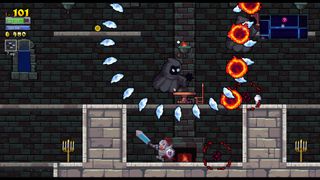
For those still preparing a second foray which focuses on new systems, there's the worry that the simple fact of development time means standing still in a scene that is constantly moving forward. In the case of Darkest Dungeon 2, Sigman says, the core loop has been in place for two or three years now. "Some things that might've been 100 per cent novel three years ago get done by other games in the intervening time," he says. "However, as a whole I think the market and evolving taste of gamers is a massive positive. What we are doing with the sequel hits squarely into what seems like a frothy evergreen appetite [for Roguelikes] amongst gamers." Bourassa has a slightly different concern front of mind: "I've found myself struggling more with trying to live up to the original Darkest Dungeon as a creative enterprise than I have with fears about overcrowding in the Roguelike space. I think there's more than enough room for us there, provided we do our jobs well."
The sequel will get plenty of opportunity to test the latter point thanks to Early Access, enabling Red Hook to draw on fan feedback to help development in its later stages. It seems strange to consider now that when it adopted the process for its first game – just six years ago – the studio was something of an outlier. "When we released Darkest Dungeon, the prevailing opinion was that Early Access was dead," Bourassa says. "Turns out, it wasn't! Early Access was an invaluable experience for us, and I think an exciting one for our players too. I feel that nowadays Early Access is much more accepted, and its success or failure comes down to the developer's handling of it." More than just accepted, in fact. Roguelikes and Early Access now seem inseparable, a match made in heaven – or a different afterlife entirely. But we'll get there shortly.
"I do think a lot of Roguelike games go Early Access just because they go so well together," Lee says. He's enjoying its impact on Rogue Legacy 2, quickly learning what people like or don't and nudging the design accordingly. "For example," he says, "when we first launched Rogue Legacy 2, we did a massive redesign of the mana system to let players engage more with spells. We looked at what players were doing, rehauled the numbers, and immediately got a better response. If we had released the game as 1.0, I'm 100 per cent positive we would have been unable to make those sweeping changes."
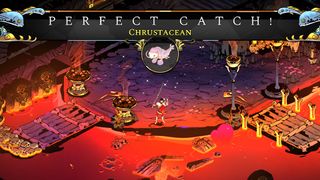
"Contrasting philosophies aside, these veterans share a positive outlook on the new wave of Roguelikes cementing a reputation alongside their own work."
So Early Access is essential? Not quite. As with any Roguelike choice worth its salt, there also has to be a reason not to take it. Yu decided on a full '1.0' release for Spelunky 2 followed by minor adjustments through patches. "It might seem like a superficial difference since both ways you're making changes based on player feedback," he says, "but I feel like my voice comes through a little clearer as an artist if I don't let the audience in early. My concern is that, with Early Access, I'd be designing fundamental parts of the game based on popularity, versus what I actually want to do."
Contrasting philosophies aside, these veterans share a positive outlook on the new wave of Roguelikes cementing a reputation alongside their own work. When we raise the subject of recent developments that stand out, a few familiar names come up: Dead Cells, Slay The Spire and, of course, Hades.
"The one [development] that's impressed me the most by far is Hades' narrative system," Lee says, "and their 'item-lines', which is a super-clever system that cleans up a ton of RNG issues, and enforces 'good' builds. It's so naturally integrated that no one even notices it." He's referring to the way the game reacts to your choice of Boon upgrades, channelling subsequent options to make interesting synergies more likely. Hades does feel in many ways like the quintessential modern Roguelike, sharing the elegant design sensibilities of its predecessors as well as their spark of innovation. It also hints at a new evolution, with Supergiant Games (an established maker of narrative-driven action games) approaching the format for the first time. As for what drew it to the Roguelike? Well, that's rather telling about the current state of play.
"Before we knew anything else about the game, we knew we wanted to make it in Early Access," says Greg Kasavin, Hades' creative director. "We were drawn to making the game a Roguelike dungeon crawler both because we love games in this genre and found ourselves playing a lot of them, and also because we think the inherent replayability of such games lends itself well to Early Access. A traditionally linear, story-driven game wouldn't give our player community much to sink their teeth into over the course of development."
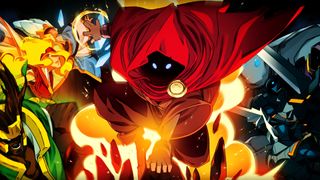

Spelunky 2 is so ambitious that even Derek Yu doesn't know what you'll find in its darkest depths
As for the design itself, Kasavin notes a number of influential sources. "Enter The Gungeon, The Binding Of Isaac, Darkest Dungeon, Spelunky, Rogue Legacy and Wizard Of Legend were just a few of the games we looked at that had excellent lessons in their structure and moment-to-moment play." (It's heartening to see all of our interviewees namechecked.) He also singles out Dead Cells for its crisp, responsive feel, and Slay The Spire for its character choices and endgame Ascension modes – all of which Hades reflects and refines.
With little desire to replicate the gladiatorial austerity of traditional Roguelikes, though, the aim in developing Hades was to deliver the thrill of the form to more players. "If you get super-frustrated and quit out, you're not looping through the game and discovering all the variety," Kasavin says. "We also wanted to give players some sense of control over the sheer randomness, providing a choice of starting weapon and ways to influence which types of power-ups appear, via the Olympians' Keepsakes. While playing a Roguelike game, consciously or not, you're fighting back against the sense of randomness, trying to control it so things go more your way. We wanted to find the sweet spot between giving players a sense of control while still having lots of variety."
But, as Lee points out, this 'sweet-spot' design garners far less attention than Hades' showcase innovation – melding Roguelike repetition with strong narrative and characterisation. "We were really interested to see if we could add a sense of narrative depth and continuity to a Roguelike game, as we felt that the inherent structure of the genre could create an interesting framework for a story," Kasavin says. A fitting framework, perhaps, but also a huge undertaking. "The story in Hades involved us doing a bunch of things we'd never done before, such as having a large cast of fully voiced characters, a speaking protagonist in Zagreus, and the relatively lighthearted and often humorous tone. It ended up quite big! Players tell us they're still discovering new story events more than a hundred hours deep."
With all the resources this implies, perhaps it will be Hades' more subtle adjustments, rather than its narrative grandeur, that seep into the next wave of Roguelikes – at least if the craft remains concentrated in the hands of smaller indie studios. But as these designers continue to push forward, there's a sense that Roguelike is not so much a distinct genre now as a strand of gaming DNA, spliced into all kinds of wares to produce strange and wonderful mutations. There's no reason this mutation shouldn't carry over to larger games – and indeed we're starting to see the first signs of this transference in the time-loop designs of Housemarque's forthcoming Returnal – and even this issue's cover game.
What lies ahead
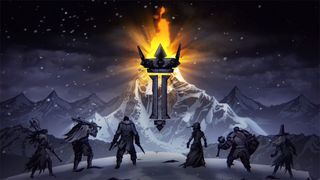
Whatever's next for the Roguelike, the developers we speak to are ready for it. "From both a gamer and game designer standpoint," Sigman says, "I'm excited to see new settings given a Roguelike treatment." As you'd probably expect, given how Darkest Dungeon helped push the Roguelike's genre boundaries, the Red Hook bosses are in agreement here. "Ultimately, adopting a Roguelike structure is just a foundation – there's really no limit to what can be built upon it, or expressed through it," Bourassa says.
With Spelunky 2 now out in the world, we know Yu is turning his attention back to the long-awaited UFO 50 – but is he tempted to return to the ever-changing territory where he made his name? "I have some ideas of my own for non-Spelunky Roguelikes, but they're not fully formed yet," he says. "So we'll see how it goes!"
As for Supergiant, it's too soon for its devs to say whether revisiting the Roguelike is on the cards, but Kasavin doesn't rule it out. "One of the reasons we were excited to work on a Roguelike game was knowing a game like that would have the potential to keep challenging us and surprising us over the years we spent playing it and working on it," he says. "We learned a lot working on Hades, and a lot of it we think is really interesting stuff, so I imagine we'll continue to explore and build on some of these ideas in one form or another."
Which leaves Lee. With the boundaries moving, even as Rogue Legacy 2 goes through Early Access, he is keen to explore. "There's a ton of ideas that I'd love to do which have Roguelike design principles to them," he says. "In my eyes, if you scrape everything else away, a Roguelike is just an improvisation machine. The designer creates a set of concrete rules, and a set of random variables which tweak those rules. As long as the user has to play within those variables – and cannot just crush them away through choice – then you've got a Roguelike experience. With that much leeway, I'm not sure there is such a thing as limited potential for the genre."
This feature first appeared in issue #357 of Edge Magazine. For more great articles like this one, check out all of Edge's subscription offers at Magazines Direct.

